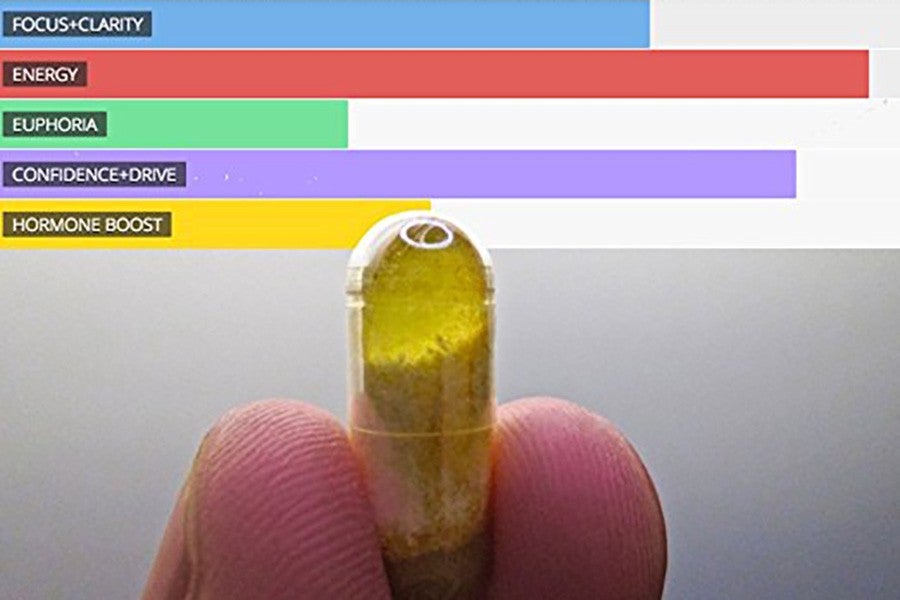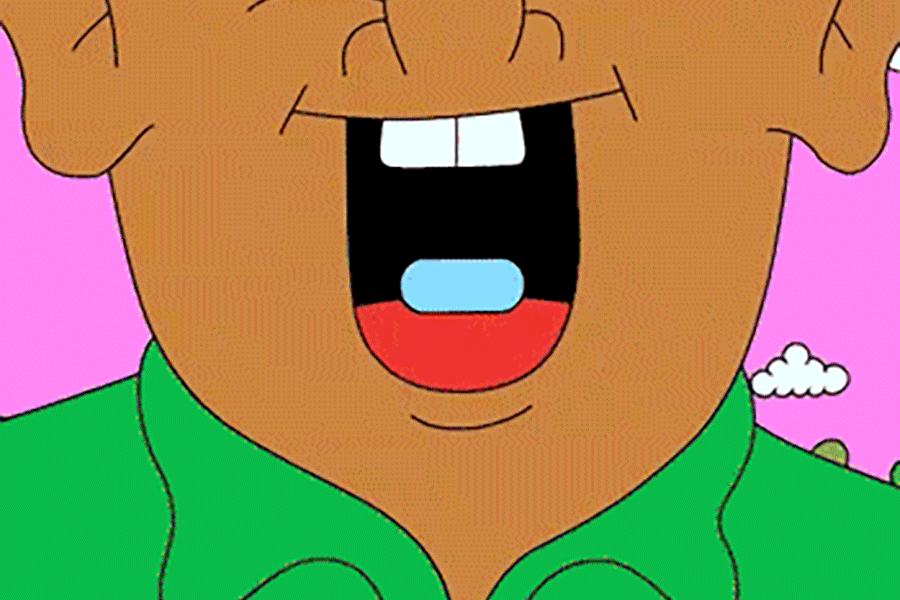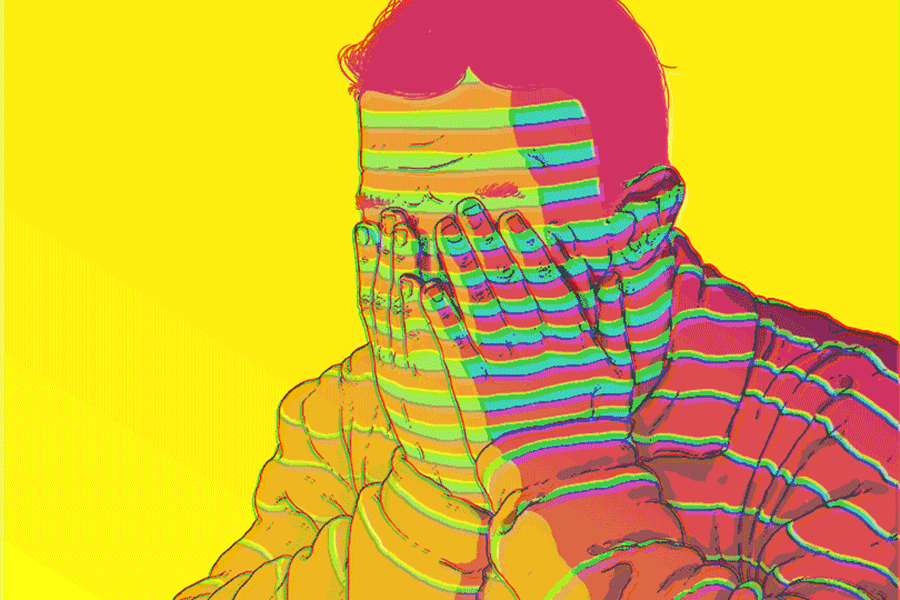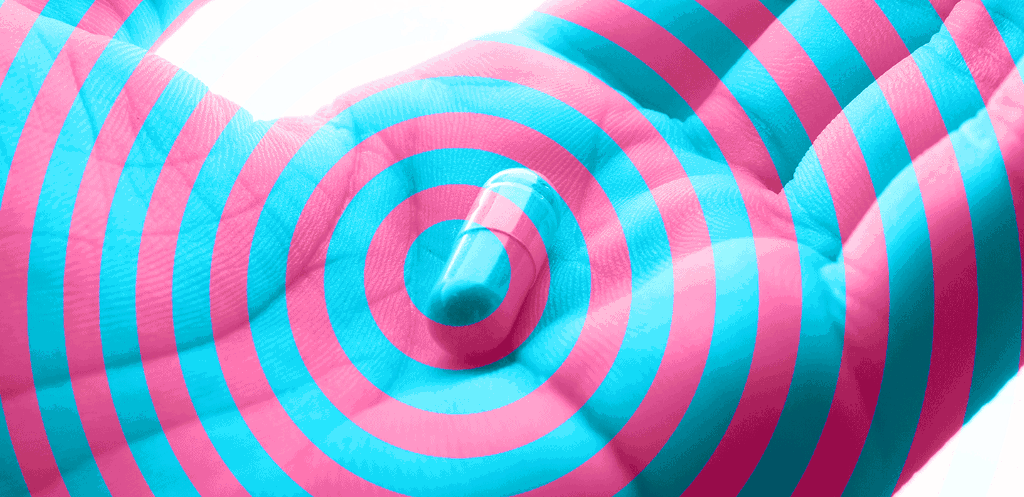Katy starts slow, like Molly should. But within an hour of swallowing the capsule — which is half small gel vitamin and half crunchy, sandy, yellowish powder that looks remarkably like the MDMA I regularly bought in college — I’m still grinning like an idiot.
I can’t shake, though, a certain kind of nervousness. I’m more nervous, in fact, than if I’d handed a friend of a friend $20 in the bathroom of a club and washed down a gel cap of powder with a handful of water from the sink, which is ridiculous. The pill I just swallowed contained no unknown chemicals, was largely vitamin-based and had published reviews. I’d bought it via Amazon, for Christ’s sake. (Retail price: $16 for four packs.) And it was from Web Nutrients, the Washington-based supplement and nootropic company behind NZT-48, the brain-boosting drug in the film Limitless. For me, it was a legal, all-natural alternative to Molly that people claimed would still provide the amazing MDMA high that had once changed my life — and made me feel a million times better about myself.

It didn’t mean, though, that it could negate my biggest fear: The last few times I’d done Molly, the following 48 hours had left me tip-toeing around the edge of an emotional black hole.
Katy, however, promised to avoid all that.
But could it? (It seemed like a tall order.)
More importantly, would it even work?
And most of all, would Katy allow me to feel it — the rise in body temperature, the sense of calm, the urge to run my hands up and down my arms and giggle at how nice everyone is that leads to a surge in confidence, and then, maybe, the overwhelming need to tell everyone how fabulous they are, how damn lucky we all are to be alive exactly as we are and make out as fiercely as possible with anyone in arms’ reach?
According to the packaging, you should start with one Katy capsule and can expect to feel the effects within 90 minutes. After that 90 minutes, if you want to go over the edge of feeling good into feeling high, take another. Two in a 24-hour period is the maximum recommended dose. Alcohol will increase and speed up the effects.
On this night, I’m at the Elbo Room, a two-story bar with a dance floor and stage upstairs in San Francisco’s Mission District, standing in line at the bar for a(nother) tequila and soda, about an hour into my first dose. I can feel the corner of my mouth start to twist into an involuntary smile as the bartender perches a lime on the rim of my drink. When he hands it over, I smile wide, pleased at the drink that’s headed my way but more excited by the beauty of life in general.
In other words, I’m exactly where I want to be.
The glass is cold and smooth. My dress hugs me perfectly. It feels good to be held by its fabric and to feel the swish of its skirt around my knees. The band isn’t great, but I close my eyes and sway with the music, small, contented sighs purring in the back of my throat. When I open my eyes, I find I’m doing a bit more than swaying, I’m dancing, and while I couldn’t say that I was high — there was no eye-rolling bliss — there was a wonderful sense of everything being right.
And so, I stay there. I ride three or four hours of a mellow but delicious high and down a few more drinks before turning in for the night. I don’t hit up an EDM club and lose hours to the sounds of a synthesizer or spend an equal amount of time making out on the couch with a group of equally turnt friends. But I get the feeling that if I had taken that second pill, I could have.
I do, however, stay up until about 4 a.m., talking with a friend in her kitchen — but in an intentional way, not the way you feel when you’re jabbering about nothing or exclaiming the beauty and wonder of the mundane when you’re super jacked on stimulants. I never blip out of the conversation because I’ve completely lost my train of thought or forgotten I was talking. I don’t feel angry or depressed when we go to sleep. Nor do I toss and turn and begrudgingly watch the sunrise through the blinds.
The next day, I wake up at a reasonable hour, given the previous night’s activities and don’t hate the world. And better yet, two days later, the morning after the morning after — often referred to as “Blue Monday,” where your serotonin receptors have totally phoned it in after a weekend with Molly — I don’t find myself irritable or panicky like I’ve experienced with MDMA in the past.
I think it worked.

I was diagnosed with generalized anxiety disorder in 2015, but I’ve been affected by anxiety of varying degrees of severity my entire life.
I’m 29.
My anxiety isn’t trauma-based. I have wonderful parents and was an academically successful, fairly athletic kid. Nor is it circumstantial: Everyone feels stress; not everyone tunnels down a rabbit hole of shame that leaves them huddled in a corner close to tears when they think they might have said something stupid at a party — five years ago.
I have what I describe as an “extra cylinder” running in my head that, if left unoccupied, turns inward, barreling down on the parts of my personality, abilities and life choices it deems insufficient or lacking. Which, for the cylinder, is everything about me.
For the longest time, Molly was the only thing that could hit pause on that extra cylinder. When I was high, and even later when I came down, it was like someone had reset my brain. I had a clear outlook on my place in the world and didn’t feel like I needed to apologize for my existence.
I first tried it in college (but of course). It was the night of one of the biggest parties on campus, and I was on the last day of Flagyl, an antibiotic infamous for inducing horrific vomiting when combined with alcohol. I’d been a good girl, and as the only sober person in sight, I’d spent the previous night navigating a sticky situation on behalf of a friend. She was horrified that I’d been stone-cold sober for the previous night’s drama and wanted to thank me with me a sandwich-sized Ziploc bag containing a thin line of pinkish-yellow powder along the bottom.
“What is it?” I asked.
“Molly. It’s like Ecstasy but without any of the trash they pack into pressed pills. You’ll feel really good.”
Alone in my dorm room later that night, I stared at the bag on my desk. How, exactly, was I supposed to ingest this stuff? I wondered.
Fortunately, I was dating an older, much more experienced boy. I called him into my small room and held up the bag for his inspection. “How do I do this?” I asked. He looked at me dumbfounded.
“You ever put anything up your nose before?”
Hmm. No, I hadn’t.
“Alright, Parachute it is,” he said.
He began to show me how to construct DIY pills out of small squares of toilet paper and put them far back in my mouth, ensuring that they wouldn’t spill the powder, which is rather foul tasting, all over my tongue.
“See you tonight, lady,” he said as he left. “You’re going to have so much fun.”
As I walked across campus that night, having dutifully consumed just under half of the pinkish powder in tiny wads of toilet paper, I wondered when I would start to feel it and what it would be. All I could gather from people I knew was that touching things would feel amazing; that I’d really like everyone around me; and that I’d probably want to have a bunch of sex at some point.

It hit when I was standing in the living room of one of the more house-like dorms listening to members of the rugby team being toasted and roasted with my boyfriend. I was holding his hand when I noticed I was rubbing his thumb between my fingers — hard. He looked at me and grinned. I stared back in shock, my free hand drawing small curlicues up and down my thigh, each finger melting into my leg. I couldn’t tell which part of my body was having more fun — my fingers or my leg — but I knew I should probably keep doing it. Holy shit! This is amazing, was all I could think. It was like all these years I’d been touching things incorrectly. This was what feeling things was like.
Time blurs shortly thereafter, the night becoming a kaleidoscope of bright, beautiful people, the stunning glow of lights, the thrilling shock of the temperature change between the crowded party and the crisp October night air. Friends of mine were, to me, magnificent beings, the very best versions of themselves. I did my best to tell them, too — that they could do no wrong; that their plans would fall in place; that even if they couldn’t see it yet I could.
“I love everything about you. Even the parts you don’t like,” I remember telling my boyfriend. When I stumbled my way upstairs to the bathroom, a trek like crossing a small mountain range given how my legs wobbled underneath me, cold water from the sink sent me into small gasps and giggles that surely sounded like sex from the outside. When I looked into the mirror, I saw reflected back not only a more attractive, seductive version of myself, with dilated pupils and dewy skin, I also saw someone I liked — someone I’d stick up for.
“You’re okay,” I whispered to my reflection. “Really, really. You’re okay.”
There was only one problem: MDMA, like LSD and psilocybin, the active ingredient in hallucinogenic mushrooms, plays on the neurotransmitter serotonin, which helps regulate mood, alertness and anxiety. But unlike LSD and mushrooms, which mimic serotonin in the brain, MDMA encourages your body to release more of its natural stores — meaning, eventually, you run out and your body will need time to produce more.
And so, after the first two or three times, I started feeling panicky a day or two after a night out on Molly. After three or four months of rolling every other week, it stopped working altogether. My brain needed a break; my serotonin stores were practically dry, friends told me.
But how could I find some peace with myself without Molly?
It was seemingly impossible. Case in point: When a close friend told me she was taking six months off from MDMA so she would powerfully feel its effects again, I almost cried.

In addition to being biochemically unsustainable for your brain, Molly is also a drug that’s often mixed with dangerous fillers. The DEA classified MDMA as a Schedule-I drug, the most restrictive category for chemical substances in 1985. Much like cocaine, which is often cut with baby laxatives or lidocaine, MDMA is typically combined with straight methamphetamine to increase the volume of a dealer’s stock. Ecstasy tabs, often pressed, brightly colored pills, have been the most egregious offender for being a mixed bag of amphetamines, hallucinogens and even opiates since the late 1990s.
“Less than half of the Ecstasy or Molly found on the street tests positive for containing any MDMA,” says Brad Burge, director of strategic communications for the Multidisciplinary Association of Psychedelic Studies (MAPS), a Santa Cruz-based organization pursuing safe and legal medical and cultural uses of psychedelics. Powders or crystals, Burge explains, are much more likely to contain the real deal — though there’s still always a chance they’re less than pure.
In April, MAPS announced a $25 million plan to make lab-produced MDMA (100 percent pure with no adulterants) a prescription medication for people suffering from PTSD. The results of their preliminary studies show that after two or three sessions of psychotherapy while under the influence of small doses of medical grade MDMA, two-thirds of participants no longer experience PTSD.
“MDMA encourages the brain to release oxytocin, which promotes feelings of intimacy, an important factor when working through difficult or painful memories,” explains Burge. “MDMA also tamps down on the activity of the amygdala, the portion of the brain responsible for fight or flight, which is helpful in treating PTSD since people with PTSD have an overactive amygdala and are always in an elevated state of awareness.”
My levels of anxiety aren’t those that MAPS wants to treat with MDMA, but what if there was something legal and chemical-free that I could use, without a prescription or the need to take it every day, for a quick trip back to that calm, quiet place where I really liked the person I saw looking back at me in the mirror?
That’s essentially the point of Katy, orders of which skyrocketed almost immediately after its launch last August.
“Katy took off vertically,” explains Mark Effinger, CEO and head of production at WebNutrients. “With two press releases out to EDM magazines and zero marketing, it went vertical. My company grew over 5,700 percent over five years. Katy effectively doubled that number in eight months. We added eight employees to our firm just to handle the Katy products.”
“Until the end of January,” he continues, “we were running a daily backlog of 3,000 orders behind.”
According to Effinger, Katy combines:
- Kava kava, a root native to the Pacific Islands renowned for its calming effects (it alters brain wave patterns in a way similar to Valium);
- An extract of guarana, a seed containing caffeine;
- Grapeseed extract, which stimulates circulation;
- 5-HTP, a naturally occurring amino acid that’s also sold in pill form that stimulates serotonin production;
- Theobromine, an alkaloid found in cacao and dark chocolate similar to caffeine that also stimulates oxytocin production;
- Curcumin, a compound found in turmeric that contains antioxidants shown to boost cognitive development;
- EGCG, the metabolic-boosting antioxidant found in green tea;
- A blend of racetams, a class of cognitive-enhancing organic compounds.
Effinger claims that the mixture provides euphoric rushes and a base of nutrients that allow your body to replenish dopamine and serotonin. “The goal was to create a decent euphoric experience but also replace the neurostimulators you would normally deplete when you’re high,” he says. “If I could replace those, you wouldn’t crave more.”
“I remember friends of mine going to raves and then hiding in their rooms for two days,” he adds. “I wanted to build something to avoid that negative aftermath.”
The herbs and compounds in Katy, he alleges, both trigger increased serotonin and dopamine release and give your body the raw materials to create more of those neurotransmitters, avoiding the comedown and potential for day-after anxiety or imbalances.
In other words: No crash or morning after the morning after panic.

Of course, that’s if Katy checks out at the biochemical level. “I can’t comment specifically on Katy because it’s not a psychedelic,” Burge of MAPS tells me when I ask him if Effinger is just a great marketer and if what I felt was just the placebo effect. “And generally, you should err on the side of caution with new compounds — we haven’t had years or decades of human experimentation with them. But I think the trend toward nootropics and cognitive-enhancing supplements is great. They let people take their consciousness into their own hands, and that’s a good thing.”
Effinger got into the nootropics business more as a guinea pig than a chemist. A key consultant for PRweb.com, a high-profile public relations resource, he was in charge of teaching seminars over multi-day conferences with CEOs and other upper-level management types. “We needed a way to be up and on top of our game for as much of those three days as possible,” he says. “So I’d bring a tackle box of supplements — what was the start of our blended nootropics.”
The compounds tasted terrible, he says, but they worked. (A doctor turned Effinger, a former body builder, onto natural supplements and nutritional enhancement in the early 1990s.) “Working at PRWeb plugged me into a network of some of the sharpest minds across a web of different industries,” Effinger explains. “I had a list of 520 people interested in creativity and productivity, and they became my test runs. I started sending them this powder in a test tube — which, now that I think about it, probably wasn’t the smartest way to package things — to get their responses.”
This homegrown trial-and-error led to Effinger’s first hit product: NZT-48. From there, his interest in nootropics became a full-time endeavor. Today, he sells customizable blends of them as well as non-synthetic supplements for ADD, cholesterol management, combating depression, and yes, party pills like Katy.

With one hit of Katy, I easily melted into the in-between space of sober and rolling my face off_that warm, mellow, giggly zone I’m used to inhabiting before the first peak of a night on MDMA. Most importantly, I found the distance I wanted between myself and my hyper-critical extra cylinder. The difference wasn’t as intense as it is with Molly, but thanks to some successful years in therapy and a very low dose of Zoloft, neither is my daily anxiety. (A quick, crucial footnote: The packaging for Katy notes that people on antidepressants should consult a doctor before taking Katy or avoid taking it altogether. By reducing my daily dose of Zoloft the week before taking Katy, I didn’t experience a negative reaction, but I highly recommend talking to a doctor or therapist before attempting to do the same.)
I’m clearly not alone, either. According to Effinger, while the initial burst of interest in Katy was from the club/party scene, his most frequent repeat customers have communicated to him that they’re using it in place of anti-anxiety medications like Valium and Xanax.
I’m not going to go that far. After two decades of experiencing ugly, panicky feelings on a regular basis, I’m thrilled with the distance Zoloft puts between me and my anxiety. But I know that daily medications aren’t a viable or desirable option for everyone, and that everyone who experiences anxiety experiences it differently. I also know all too well that attempting to manage an anxiety disorder with unregulated synthetic chemicals is unsustainable and dangerous (not to mention extremely expensive).
So yeah, maybe a plant-based pill boasting a mild psychedelic experience is an unconventional option. For all the obvious reasons: It’s something you purchase from Amazon as opposed to a pharmacy; its creator’s background is in PR; and maybe most of all, it simply sounds too good to be true.
But as crazy as all that may be, I still don’t see it as unviable. Because if I’ve learned anything from my wildly different attempts to control my anxiety over the years, it’s that you can’t outrun your brain by yourself forever.

